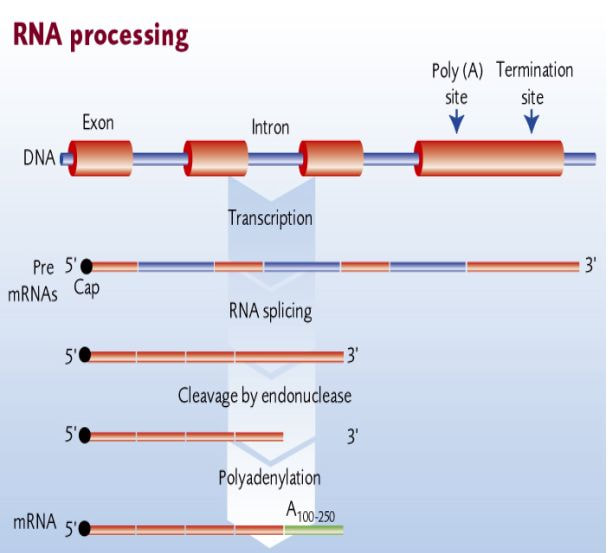Subtopic 3.3: RNA Processing
|
The newly synthesized RNA transcripts are processed prior to their use in the cell as mature RNA.
|
- Synthesis of the poly(A) tail. This is a stretch of adenine (A) nucleotides. When a special poly(A) attachment site in the pre-mRNA emerges from Pol II, the transcript is cut there, and the poly(A) tail is attached to the exposed 3′ end.
This completes the mRNA molecule, which is now ready for export to the cytosol. (The remainder of the transcript is degraded, and the RNA polymerase leaves the DNA.)





